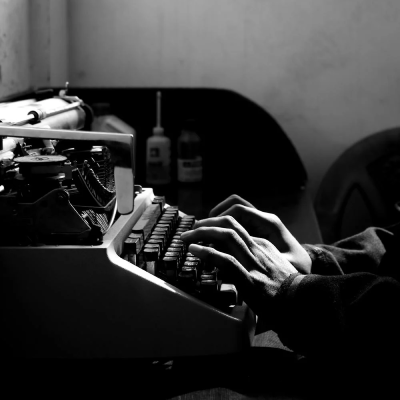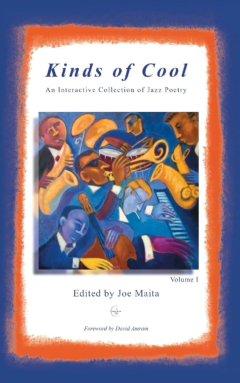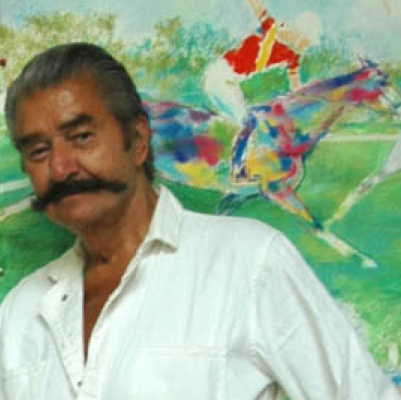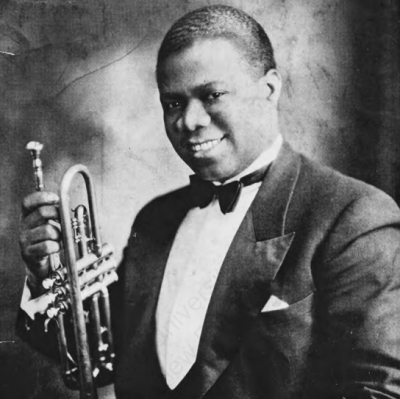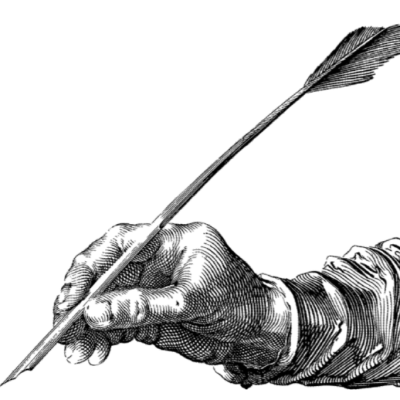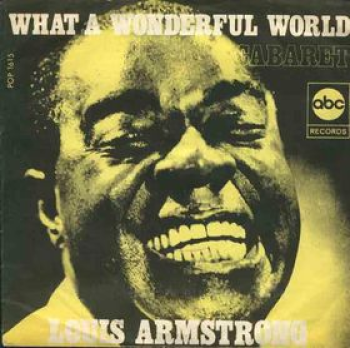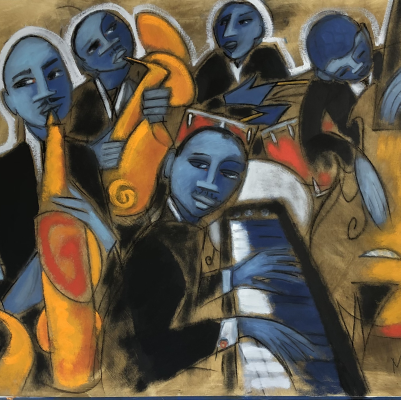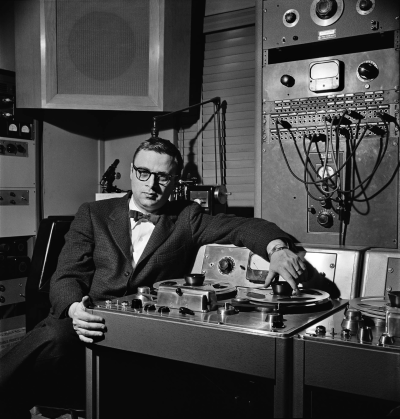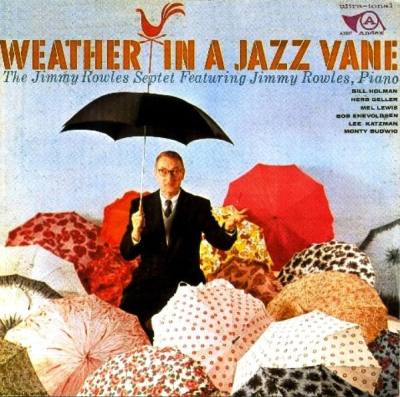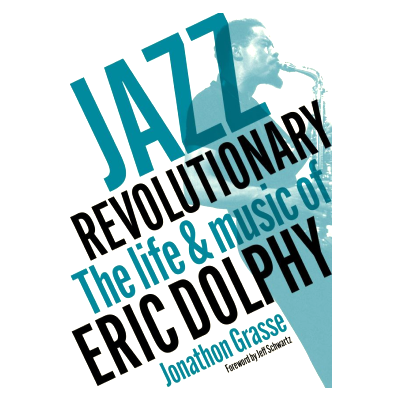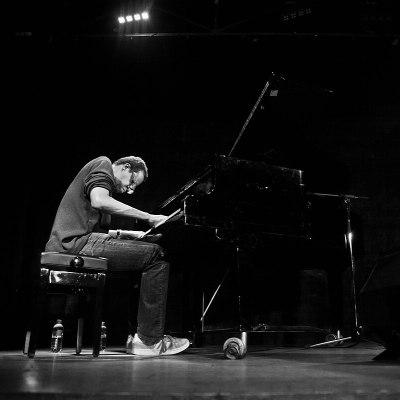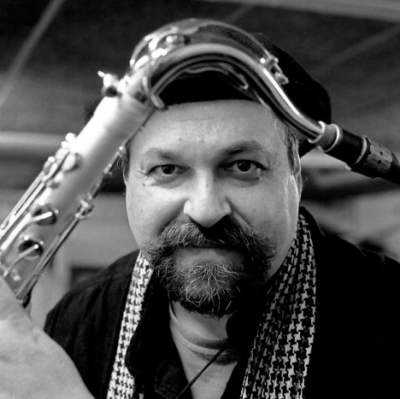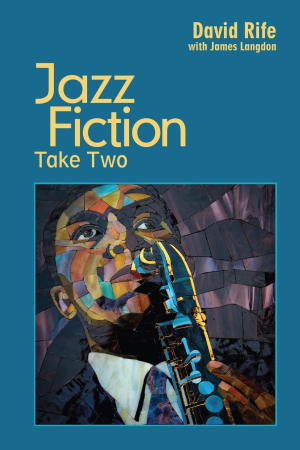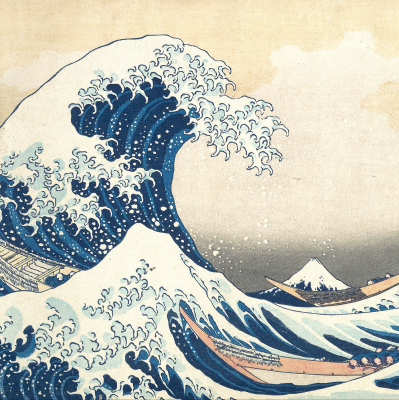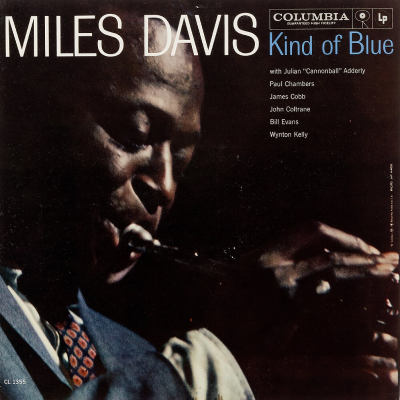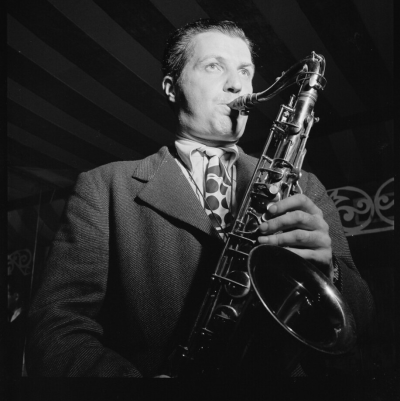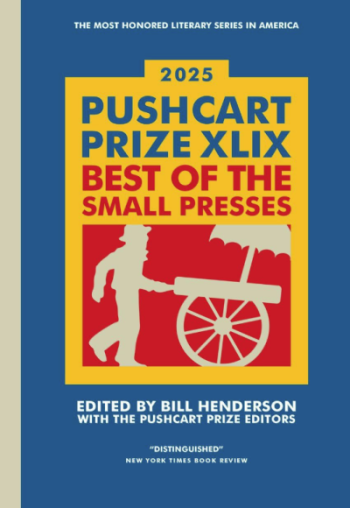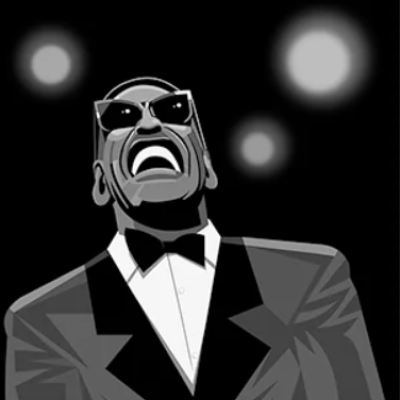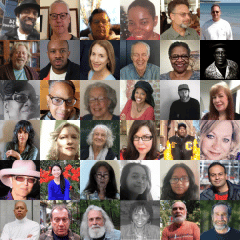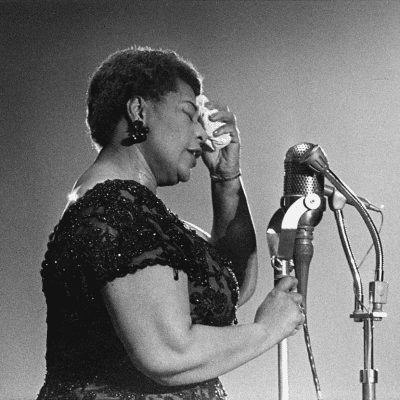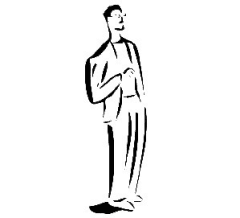.
.
An ongoing series designed to share the quality of jazz poetry continuously submitted to Jerry Jazz Musician.
Thanks to the poets…and enjoy!
.
.
___
.
.
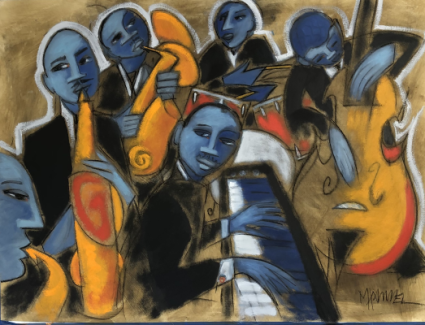
“Born Blue,” by Marsha Hammel
.
___
.
Down River
Listening to Wally plays the blues
I’m side edged by the comfort of the chair
As it blindly slides down the river
Gentle ripples sway me with the motion
As I deliver myself through seductions of sound
Notes leap like fish
I let my arm swish
As I wash away into the ocean
Where I’m kept afloat
On the airiness of the tone
Lifting me up to the clouds
Where I float in the sky
Looking over the lands
I once walked as a child
All those years gone by
All in an instant.
.
by Anthony Ward
.
___
.
Jazz Film Noir
Flip day for night then lose the glossy crooner
Let the trumpet solo drain the oil from showbiz lake
Cruise a lowdown hungry blues
Along the Great White Way
To citizens’ arrest on Lower Broadway
Baste two broken hearts
In Creole sauce and burn them
Candy canes on Christmas trees
No longer swing nor taste as sweet
Cowboy chords cannot investigate
Certain commission of crime
In these disunited States
But come next chocolate Easter
Bunny-Hop and following a lead
Someone may Arise
To hold a blow-torch to the truth
Who makes an omelette unafraid
Of breaking eggs
.
by Bernard Saint
.
___
.
Slow Dance
I’ve been spoiled by sea roses
Extravagant gifts in the shadow
that you cast
I stand on my own
But today I will make
An exception
We are a slow dance of pearl
And garnet roses / our own
Private syncopated pain
Stan Getz on the turntable
A gentle purity / Mellowness
And I only dance with the one
Who brought me!
Prickly / wild / a bouquet
Of regret and memory
And to those who ask
I only tell them he was
Too good to me
.
by Connie Johnson
.
___
.
Nothing Like
Nothing like dancing
A slow jazz tune
Couples clasping
Tenderly
Eye to eye
Cheek to cheek
Heart to heart
Loving expressions
Exude
Each
Sultry song
Softly
………..Sidestep
………..………..………..Turn
………..Dip
Sway
Body and soul
Melody p~u~l~s~i~n~g
(Within) their own
[Dimension]
Sharing
>Introspection<
Affirming {embrace}
.
by Mike Mignano
.
___
.
.
Unforgotten
every now and then
I remember meeting in smoky bars
the murmur of your tongue whispering
my own thoughts back to me
I remember gris-gris
wrapping around palm wine
and watermelon rind
bursting into the sun
sweating
in motion / in heavy labor
touching hands across the table
building pyramids with our fingers
Jazz guides all memories!
takes me back to the night
of blowing an alto flute
notes spiraling up
to where the stars
tremble
.
by Connie Johnson
,
___
.
Jazz Noir
Eyes dark,
lips bright
spikes stepping
into night.
What’s that sound
across the street?
Come on by –
time won’t keep.
Meld of metal,
skin and reed –
soothe my soul,
if you please!
Spirit lifted
drifts back down
after sauntering
‘round Olde Towne.
Eyes darker
lips pale
feelin’ ever
so, so frail.
Go back to
a place in time,
Jazz Noir
let’s the rhythm rhyme.
.
by Cynthia Gallion
.
___
.
Billie in Moonlight
………….(for Billie Holiday singing ‘A Sailboat in the Moonlight’)
A heavenly sailboat floating in moonlight
anchored by soft breezes on a summer evening
on sweetheart bay, longing only for her lover’s kiss
on a calm lake in Minnesota or the Adirondacks
was so far removed from the life Billie lived…
…..(as if she was the best white actress
…..at Warner’s or RKO,
…..she allowed you to believe in romance,
…..the recording studio was her meager sound stage
…..where she performed her transformations
…..with Teddy and Pres and the rest)
Billie’s reality; cross country tours, long hours
on cramped busses, refusal of service for food
or lodging, racist cops and jim crow everywhere,
—-as far removed from floating dreamy evenings
in a sailboat in Minnesota or the Adirondacks
as Hollywood from Harlem…
…..(conversational and easygoing,
…..her voice painted a feeling,
…..drifting herself and you as a surrogate,
…..on that mythical bay in Minnesota or the Adirondacks
…..under never ending stars while Lester, her stand in beau
…..blissfully held his tenor at a 45 degree angle
…..casually like an oar).
.
by Daniel Warren Brown
.
___
.
Lady Day
Hey Lady Day
won’t you
stay Lady Day.
And sing
Lady Day
your reedy
thin warble
bursting out
with power
and presence.
You never found a place
to run to
so stay Lady Day.
.
by Lynn White
.
___
.
aubade, clifford brown
i have encountered so much
beauty
daddy.. roderick
i have suffered so much
loss
…………………………………mama
every time i hold a woman
i feel the presence of
god
in my arms, bringing
me peace
every time i listen to jazz
i imagine them sitting in
the living room
the southern vibe coursing
through my vein
the music always brings me home…
.
by Erren Kelly
.
___
.
My Jazz Career
Loved to sing,
but never learned
to play an instrument.
Age seventy learned to
read music and play alto sax.
Had a few gigs with
fellow amateurs.
Too old to make
progress, stopped
playing and my sax
gathers dust.
Alas, might have been
the incarnation
of Stan Getz without
his addiction.
.
by Henry Wolstat
.
___
.
Jazz Messengers, San Francisco 1988
Looking for a place to spend the evening,
we entered the The Great American Music Hall
as Art Blakey was there, holding
sticks atop skins, behind many young men.
Those Jazz Messengers were cooking, the honed
and buttoned horn section dressed neatly
in suits, dress shirts and wearing ties
all in a line across stage, newly minted, and fine.
The jazz kept coming in like a hard bop train
headed west with the night;
however, we were surprised when Art started
talking at the end of the first set,
telling how over the years he had taken young men
and trained them to be musicians,
paying them to attend the School of Art Blakey.
My friend Bill, a true aficionado, said “Man,
these guys never say things like that!”
And Art was giving us a sermon
on teaching, like a Father at a mass,
speaking the Latin of the street—
it was about religion . . . as music, and art.
Later I learned how Blakey had mentored people like
Lee Morgan, Wayne Shorter, Wynton Marsalis,
Horace Silver & played with Miles Davis, Charlie Parker.
The hall half empty, he invited us to stay for the
second set, which we did.
I left the music hall determined to make teaching
my career too—as it turned out,
to military men & women—
giving them skills that would see them thru.
.
by DH Jenkins
.
___
.
Playing a Saturday Night at the Jazz Club
This night is hungry.
Insatiable.
He senses it as his fingers
serve up the appetizer.
He adds to the skillet
and keeps cooking.
He feeds it everything he has—
every note
every riff—
but, it is not enough.
Finally, there is nothing left
but the salt in his sweat.
The tongue of the night
has licked the plate clean.
.
by Laura Trigg
.
___
.
Jazzim
Plato warned against
……………..both poets and musicians
………………………………..Oh, yeah, we bad!
We slide right in
……………..your ear and stroke
………………………………..your limbic stem
with crazy rhythm
……………..set you janglin
………………………………..all ankles and elbows
tastin syncopation
……………..and hearing rainbows
………………………………..Sweet jazz
is sometime all we has
……………..and when it’s really
……………………………….bendin & shakin (soul quakin)
it’s about all we need
……………..Breakin all the rules
………………………………..these strange harmonic holy fools
makin what must be
……………..God’s noise when He
………………………………..gets really high
Yeah! On the octave day
……………..God created jazz and said
………………………………..“Damn, that’s good!”
.
by Michael Baldwin
.
___
.
Almost Some Day
7 o’ clock in the morning is
break time. Slow jazz makes for
slow work and sudden lines,
conveyor belts to sudden rhymes.
We’re almost there.
A turn and a walk from the parking lot,
an open door, the bebop of good morning.
Subtle grace and the cost of saying hello.
Work makes a man forget cause.
Jazz reminds of still lonely offices,
of peach bloom riffs, and
women with dark brown hair.
Where is there more philosophy than this?
More cause? Slow reminders to forget
and a beat before sunrise. Dragging pause,
the soft auburn light that exclaims, I wish.
.
by Michael Edman
.
___
.
Broken Glass Blues
…………………..(in honor of Mose Allison)
the barber won’t even cut my hair
my girl friend refuses to answer
to that term
my best friend has cut off my credit
the streets are filled with the blues
but no one lets me use that term
i’m not down and out
i’m stuck in the back of the alley
playing the thunderstorm blues
truly an harmonica tune of my own concoction
I beat my feet creating a rhythm of the street
my voice sings with the beauty of broken glass
.
…………………..(for my pal, Michael “Hot LIps” Citrino)
.
by Michael L. Newell
.
___
.
June Saturday Rain
I listened
……………..To the jazz……….. in the rain.
Steady, …slow
……………………………….Brushes on the rim.
Until the winds leaned in,
……………..Blowing over the sheets,
Leaves twisted and strummed.
………………………….All wet
From the spray
…………………………..Of the robin’s shake.
Posted on the bow
With a sentry hawk.
The oaks thrilled until
……………………………this brassy storm passed
As it always does,
……………………………After ample measures.
.
by Michel Krug
.
___
.
Walking the Dirt
the dust of
flat and lifeless towns
breeds a cold wind
as he walks the dirt
with a song
branded in his head
and on his arm
marching tired feet
into nameless places
looking the same.
finding refuge
where red neon’s
and smoky clubs
fulfill his need
to live and breathe
the sound
he sings with
a crooked smile
releasing the jazz
calling listeners
to his side.
.
by Roger Singer
.
___
.
Solo Dancer
You made me the solo dancer in your mind
so I moan to your sensitive beat
as it thickens in the open air
as it fills out the gap between us
as we slow dance
grinding on the flesh
around our secret thoughts
Our steps are so sly
they respond only to our feet
make feathers grow between our toes
and when we do the splits
our legs are like wings
we fly away together
.
by J. Stephen Whitney
.
___
.
Black Smith
Fine Cecil distinctive Taylor
split notes played
became forged metal
iron simmered by a cool
dowse in bucket water, steam
deftly hammered welded to endure
His steeled sonics
…………………………..His Time
the clef deciding to twirl further
…………………………..downscale
His ivories were once interrogated
intentions were interrupted
by a string bass misunderstanding
so answers were inconclusive
as I’m told by the unidentifiable
See! this is how the Music digs
.
by Terrance Underwood
.
___
.
Paul Bley
perched atop two
thick phone books
on a folding chair
he hulks above the piano
rising occasionally
leaning in to pluck strings
his playing spare, understated
hinting at tunes
implying chords
starting in the middle
eliminating sections
setting up and denying expectations
like hearing voices
through a wall
the cadences familiar
but the words
just beyond comprehension
.
by Tim Maloney
.
___
.
Another Thing I Like
About Pittsburgh Haiku
it’s the why Strayhorn
remains so agreeable
lotus blossom tones
.
by Terrance Underwood
.
.
__________
.
.

Michael Baldwin is a retired library administrator and professor of American Government. He has published 7 volumes of poetry, two novels, and five volumes of science-fiction short stories. He is also a former amateur jazz clarinetist. His novel, Murder Music, follows several jazz musicians on a quest to solve the mystery of why one of them is a target for murder. Baldwin’s website is www.jmbaldwin.com
.
.
_____
.
.

Daniel Warren Brown has loved jazz (and music in general) ever since he delved into his parents’ 78 collection as a child. He is a retired special education teacher who began writing as a senior. He always appreciates being published in journals and anthologies. At age 72 he published his first collection Family Portraits in Verse and Other Illustrated Poems through Epigraph Books, Rhinebeck, NY. Daniel writes daily about music, art and whatever else catches his imagination.
.
.
_____
.
.
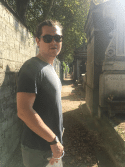
Michael Edman is a writer from Oklahoma. He finds inspiration in jazz songs such as Coltrane’s “Alabama” and Sidney Bechet’s “Si Tu Vois Ma Mère.” When not working on poetry, Michael enjoys writing short stories, and he’s currently putting the finishing touches on a first novel.
.
.
_____
.
.

At 19, Cynthia Gallion became a jazz enthusiast while growing up in Southern California. Now a nurse, mother and grandmother, she has been a North Carolinian for the past 30 years.
.
.
_____
.
.

A native of Miami, FL, Marsha Hammel grew up in Central America and Europe, returning to the states in 1961. A prolific artist, she enjoys a wide audience for original paintings and published works in the UK, having been represented by Felix Rosenstiel’s in London since the early 90’s. During a four-decade studio practice, at least 1500 paintings have become part of private, corporate and institutional collections throughout the US and Europe. Click here to visit her website.
.
.
___
.
.

DH Jenkins’ poems have appeared in Jerry Jazz Musician, Kelp Journal, and The Ekphrastic Review. His new book of poetry, Patterns on the Wall, is available on Amazon.com. He lives in New Zealand.
.
.
_____
.
.
.

Connie Johnson is based in Los Angeles, CA and is a four-time Pushcart Prize-nominated poet. Everything is Distant Now (Blue Horse Press), is her debut poetry collection; In a Place of Dreams, her digital album/chapbook (containing audio readings and personal narrative), was published by Jerry Jazz Musician. Click here to view it.
.
.
_____
.
.

Erren Kelly is a three-time Pushcart nominated poet from Boston whose work has appeared in 300 publications (print and online), including Hiram Poetry Review, Mudfish, Poetry Magazine, Ceremony, Cacti Fur, Bitterzoet, Cactus Heart, Similar Peaks, Gloom Cupboard, and Poetry Salzburg.
Click here to read “Under Quarantine” — COVID-era poetry of Erren Kelly, published by Jerry Jazz Musician
.
.
_____
.
.

Minneapolis poet Michel Steven Krug is a JHU Writing Sems grad and he litigates. His collection, Jazz at the International Festival of Despair, was published by Broadstone Books. Works appear in Jerry Jazz Musician, Raven’s Perch, North Dakota Quarterly, Poets Reading the News, New Verse News, JMWW, and many others.
.
.
_____
.
.

Tim Maloney, a retired musician, author, and arts administrator, has played in everything from Dixieland and polka bands to Basie-style big bands and yuppie bar bands, has directed high-school and college jazz ensembles, and greatly enjoys listening to younger talents, such as Patrick Bartley, Emmet Cohen, Samara Joy, and Esperanza Spalding.
.
.
_____
.
.

Mike Mignano, retired Ocala, FL.
Hometown Ithaca, NY. Grad Univ.
of Miami and Cumberland
School of Law. Interests include:
travel; guitar; choral singing; hymn
lyric/poetry writing; viewing
sports; and attending theatre.
.
.
_____
.
.
Michael L. Newell lives on the Atlantic Coast of Florida. His most recent book of poems is Passage of a Heart.
.
.
_____
.
.

.
Bernard Saint is a U.K. poet who has published in U.K. and United States literary magazines since the 1960’s. He is a regular contributor to International Times. His most recent book is ROMA, published by Smokestack Books. He worked as a therapist and supervisor in the U.K. National Health Service in psychiatry and in addiction recovery.
.
.
_____
.
.
 Dr. Roger Singer was in private chiropractic practice for 38 years in upstate New York, and served as a medical technician during the Vietnam era. Dr. Singer is the Poet Laureate of Old Lyme, Connecticut, and has had over 1,070 poems published on the Internet, magazines and in books, and is a 2017 Pushcart Prize Award Nominee. He is also the President of the Shoreline Chapter of the Connecticut Poetry Society.
Dr. Roger Singer was in private chiropractic practice for 38 years in upstate New York, and served as a medical technician during the Vietnam era. Dr. Singer is the Poet Laureate of Old Lyme, Connecticut, and has had over 1,070 poems published on the Internet, magazines and in books, and is a 2017 Pushcart Prize Award Nominee. He is also the President of the Shoreline Chapter of the Connecticut Poetry Society.
.
.
_____
.
.
Laura Trigg is a retired physician currently living in Missouri and enjoying caring for her granddaughter while her parents are at work. A writer since childhood, she has had poems published in several journals, including Encore, Delta Poetry Review, Medicine and Meaning, Months to Years, and Jerry Jazz Musician.
.
.
_____
.
.
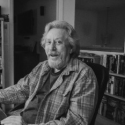
Terrance Underwood is a retired Gas Turbine Package Engineer whose career offered opportunities to work all over the world. A devoted jazz enthusiast, his first memory operating a mechanical devise was a 4-speed spindle drop record changer for his father’s collection of 78s.
Click here to read Proceeding From Behind: A collection of poems grounded in the rhythmic, relating to the remarkable, by Terrance Underwood
.
.
_____
.
.
Anthony Ward chooses to write because he has no choice. He writes to get rid of himself and lay his thoughts to rest. He derives most of his inspiration from listening to classical music and jazz since it is often the mood which inspires him. He has recently been published in Jerry Jazz Musician, Synchronized Chaos, Literary Yard, Mad Swirl, Shot Glass Journal and Ariel Chart.
.
.
_____
.
.

Lynn White lives in north Wales. Her work is influenced by issues of social justice and events, places and people she has known or imagined. She is especially interested in exploring the boundaries of dream, fantasy and reality. Click here to visit her website, and here for her Facebook page.
.
.
_____
.
.

J. Stephen Whitney is a Portland, Oregon writer who takes a strong approach to his creativity and has a genuine desire to write. His work has appeared in a wide variety of journals and anthologies. He looks to the spontaneity of jazz for creative inspiration.
.
.
.
_____
.
.
 Henry Wolstat is a retired psychiatrist in his late 80’s living in the greater Boston area with his wife. He is the author of a poetry book, Driftwood, and he has also been published in printed and online anthologies. He is passionate about running, the arts, and poetry.
Henry Wolstat is a retired psychiatrist in his late 80’s living in the greater Boston area with his wife. He is the author of a poetry book, Driftwood, and he has also been published in printed and online anthologies. He is passionate about running, the arts, and poetry.
.
.
___
.
.
Click for:
Information about Kinds of Cool: An Interactive Collection of Jazz Poetry
More poetry on Jerry Jazz Musician
“Bluesette,” Salvatore Difalco’s winning story in the 67th Jerry Jazz Musician Short Fiction Contest
More short fiction on Jerry Jazz Musician
Information about how to submit your poetry or short fiction
Subscribe to the (free) Jerry Jazz Musician quarterly newsletter
Helping to support the ongoing publication of Jerry Jazz Musician, and to keep it commercial-free (thank you!)
.
___
.
.
Jerry Jazz Musician…human produced since 1999
.
.
.






